SPRADH3 September 2024 UCC5880-Q1
3.1 Test Results
The high power test was done for multiple torque and speed commands with a 800V DC-Link voltage. This data is shown in the inverter efficiency maps in Figure 3-3 and Figure 3-4. Figure 3-3 shows the efficiency for the weak gate drive strength (5A) while Figure 3-4 shows the efficiency for the strong gate drive strength (20A). The X axis shows the mechanical speed in rpm, with the range from 0 to 9000 rpm. The Y axis shows electrical torque in Nm, with the range from 0 to 150Nm. Each of the curves presents the specific efficiency. If the same point is taken, 5500rpm and 110Nm for example, the inverter efficiency for the weak drive is 98.41%, while the strong drive is 98.94%.
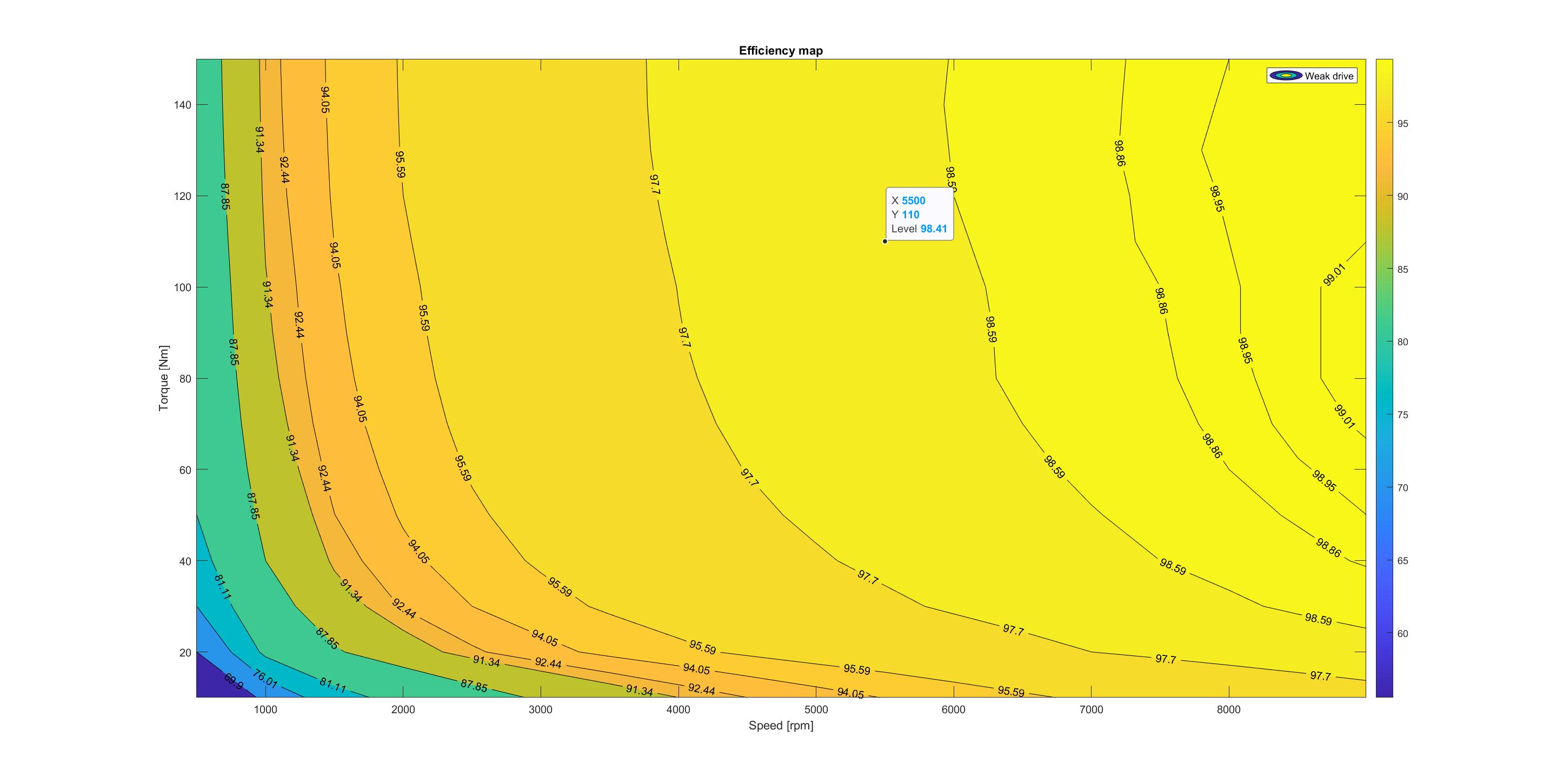 Figure 3-3 Efficiency Map for Weak Drive
(5A)
Figure 3-3 Efficiency Map for Weak Drive
(5A)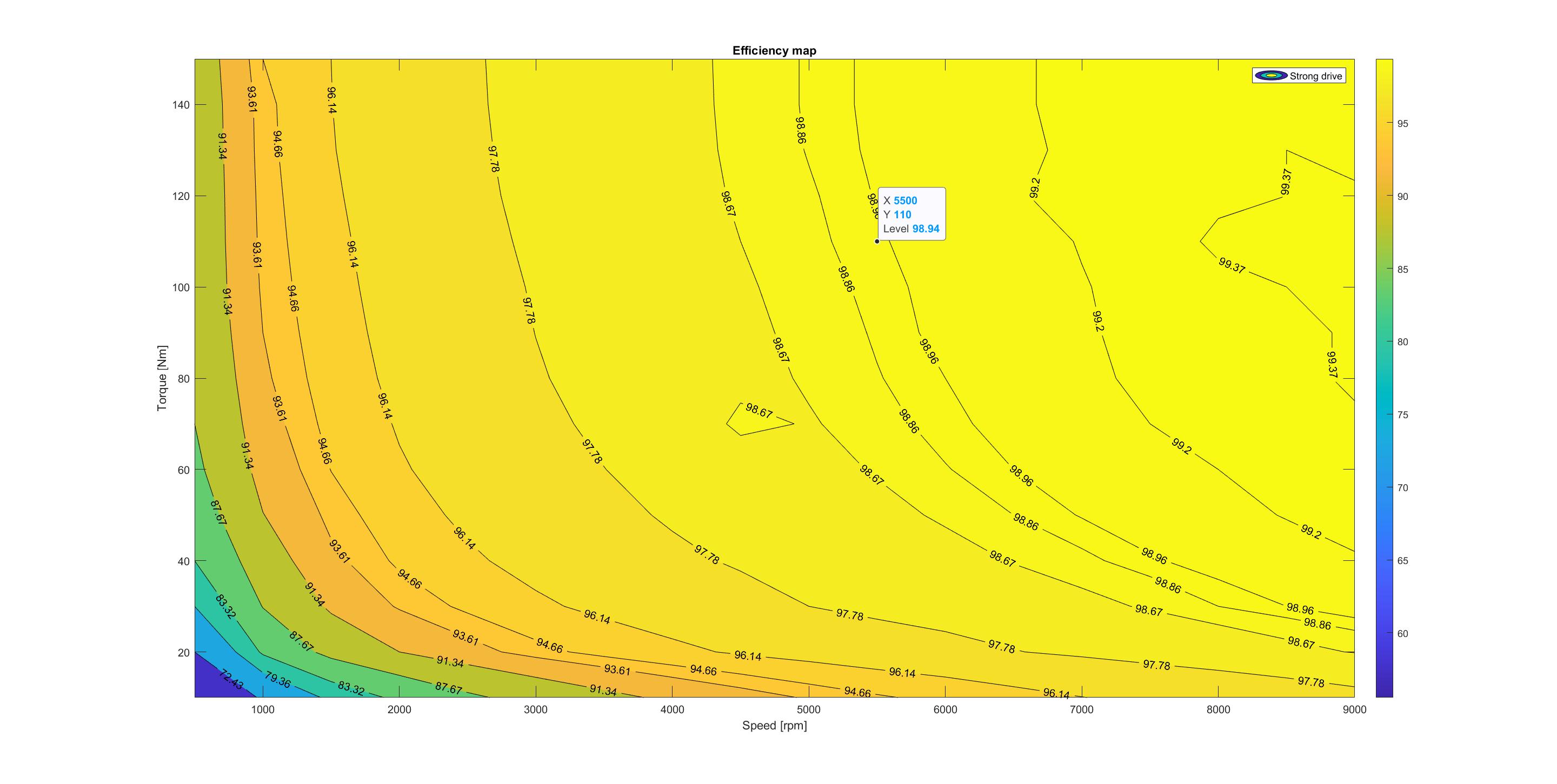 Figure 3-4 Efficiency Map for Strong
Drive (20A)
Figure 3-4 Efficiency Map for Strong
Drive (20A)The efficiency maps shown above cover the torque/speed commands required by the China light-duty test cycle – passenger cars (CLTC-P) driving cycle. Looking at the efficiency map, for the same speed and different torque commands, the higher torque inverter leads to the higher efficiency. The highest torque value required by CLTC-P for the specific vehicle vas 140Nm, which results in maximum 165Arms phase current. This driving cycle was used to show the efficiency improvement as a result of changing the gate drive strenghts on fly. Results of the adjustable gate drive strenghts during the CLTC are collected and compared with the same cycle running with only weak drive. Out of the CLTC-P speed data [km/h], required speed and torque commands are calculated for a specific vehicle type. Figure 3-5 shows the speed over the time for one CTLC driving cycle in RPM.
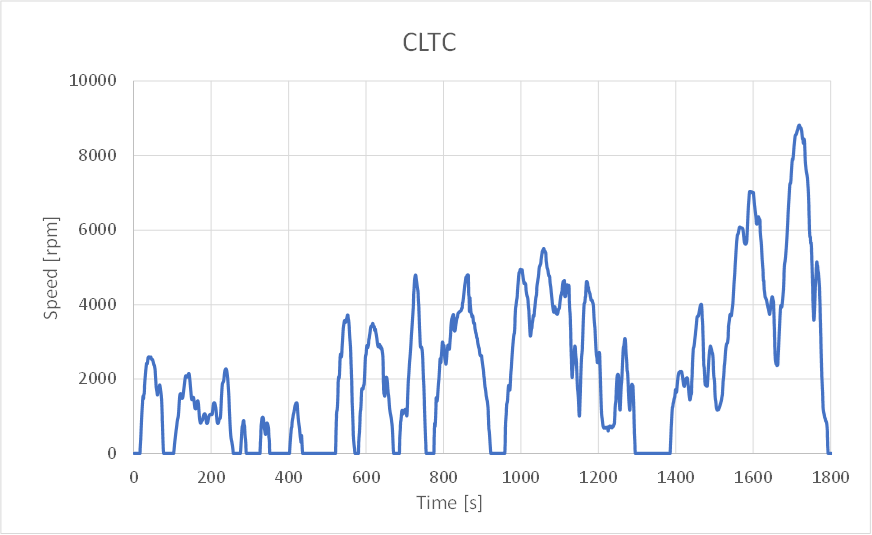 Figure 3-5 CLTC Driving Cycle
Figure 3-5 CLTC Driving CycleTorque and speed commands required by the driving cycle are connected to the data taken in the previous step and on that way was compared the energy consumption. In Figure 3-6 are shown the power consumption for the weak and strong gate drive during the CLTC-P driving cycle.
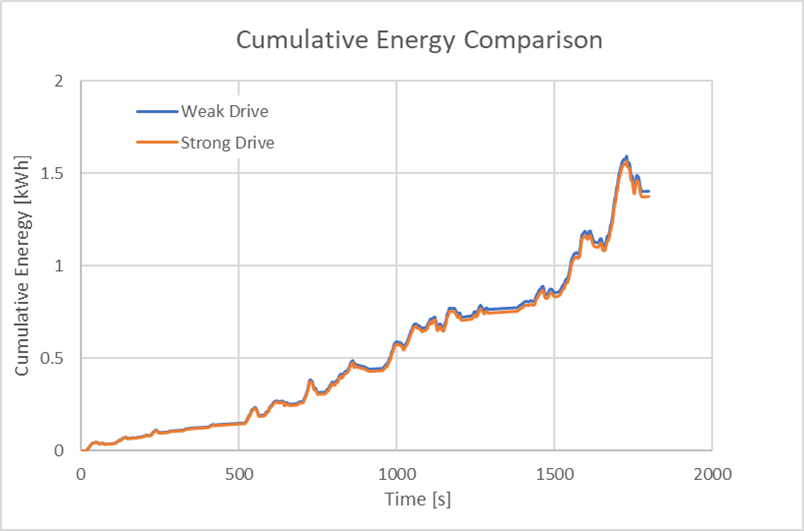 Figure 3-6 Cumulative Energy
Comparison
Figure 3-6 Cumulative Energy
ComparisonCumulative energy for the weak drive during the CLTC-P driving cycle is 1.407kWh, while the cumulative energy for the strong drive is 1.375kWh. The total distance of CLTC-P is 14.94km, therefore the average power consumption for the weak and strong drive are 93.9Wh/km and 92.03Wh/km, respectively.
Having the possibility to use the adjustable gate drive strengths during the CLTC-P driving cycle leads to the efficiency improvement of 2%. If a 72kWh battery is used as an example, this leads to the four key improvements shown in Figure 3-7. Having a 2% increase in efficiency can lead either to saving 140$ for a battery cost with 9kg of weight and 7.5l of battery volume for the same range or can increase a driving range for 15.5km.
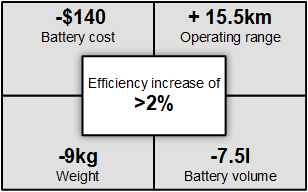 Figure 3-7 Four key factors affected by
2% efficiency improvement
Figure 3-7 Four key factors affected by
2% efficiency improvementThe energy consumption and inverter efficiency depend on the vehicle type. Vehicle weight, maximum velocity and tire radius are just some of the factors that are important to be considered. Different vehicles also need different power to achieve the same speed within one driving cycle. If the vehicle has more weight, this requires more power and therefore the adjustable gate drive has higher influence. Another important factor that has a big impact on energy consumption is the style of driving. More frequent acceleration requires more frequent use of the adjustable gate drive strength and the efficiency improvement for that type of driving is even higher.